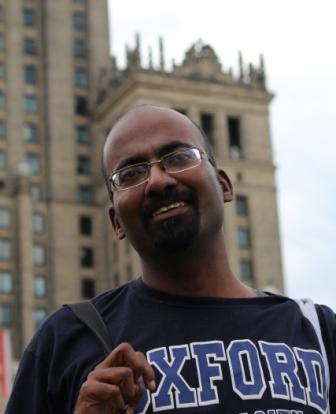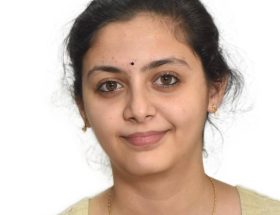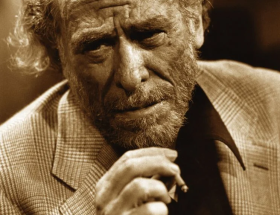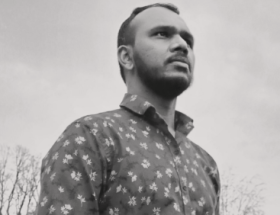Umar Nizar
The culinary crafting of Bharata’s `rasa’ theory has been established so much so that it is even compared to the South Indian spice soup called `rasam’ which is a cocktail of spicy, sweet, tangy and sour flavours. `Rasa’ depends on the sue generic creation of emotion. `Vibhavaanubhavavyabhicharisamyogit rasa nischpatti’ is the famous rasa surtra of the `Natya Sastra’ of Bharata. The raw materials of dramatic catharsis, experiential variables, fleeting states of mind combine together to form `rasa’ as a spontaneous emergence.
A comparative reading can be drawn towards Islamicate culinary traditions from Malabar, which have been celebrated with the publishing industry’s interest in cookbooks and instagram channels that deal with food cultures and the rise of celebrity chefs and culinary cultures as a lucrative business proposition. The dish called `Biriyani’ for instance has often been claimed to be the most ordered dish on online food delivery apps in India. Is there an Islamicate reading of `rasa’ possible? Can misreadings of Islam as a dry and boring medieval religion and Muslims in general as a society stuck in the religious past be set aside for a proper and genuine consideration of Muslims as actively participating and shaping the aesthetic ecosystem in the Indic milieu. That Islamic aesthetics is sidelined towards the culinary is another fact which has not received much attention. Thus museums of culture have few Islamic artifacts and Islam hardly ever figures in the syllabi of elitist schools of cultural thought such as the JNU.
Youth subcultures and `Rasa’
Apart from its culinary valences, Islamicate cultures from the Middle East to Malabar are remarkable for the prominence of youth cultures which have dominated cinematic and performing art forms as well as displays of religious piety. Thus it might appear pathological to westernised secular intellectuals to passively observe the large scale participation of Muslim men in religious rituals such as the daily Namaz and the weekly Juma’a congregation. The youth also play a major role in the development of soccer culture in the Islamicate world. Ira Bhaskar and Richard Allen have studied the `Islamicate cultures of Bombay Cinema’. In Malayalam cinema, Fahadh Faasil, Mammootty, Saubin Shahir, and directors like Aashiq Abu, Anwar Musin Parari, Rasheed, Saheed Arafat, Khalid Rahman and others have ushered in a distinctly new sensibility.
`Rasa’ in popular parlance within the Islamicate milieus of Malabar’s youth cultures can be paraphrased as `fun’, `vibe’,`olam’ (wave) etc. Sufi cultures and its impact within domestic as well as public milieus has influenced the musical cultures of Mappilappattu, gracing wedding ceremonies and in televised reality shows and contests. The participation of Islam in digital cultures of a rising India can be charted out through trajectories of culinary, performative, musical, calligraphic, musical, architectural, literary and other artefacts. The Malayalam litterateurs Vaikkom Muhammed Basheer and Punathil Kunhabdulla have been exemplars in developing a strain of spontaneous and effortless mode of writing in Malayalam fiction (as well as non-fiction) that has been Unparallelled. Basheer has been called by the moniker `Beypore Sultan’ based on his place of residence. In a famous statement in the memoir/interview `Ormayude Arakal’ (Chambers of Memory) Basheer says that `Islam comprises just some prayer, some fasting and keeping your body and mind clean’. This Islamicate ethos and its adaptability across cultural barriers has gained currency in the cultural sphere of Kerala despite the ongoing spate of right wing hate mongering.
There has been a suggestion that the `Mappila Ramayanam’ which describes Valmiki as a bearded Auliya, could be the creation of this syncretic synergy between cultures and communities sharing vibes in modernising Kerala. The `Mappila Ramayanam’ has had its advocates who vouch for its genuinely and usefulness in inculcating pluralistic ethos as well as critics who dub its veracity as dubious at best. But the `Mappila Ramayanam’ exemplifies the ability of the Islamicate milieu of Malabar to effortlessly appropriate and subvert a majoritarian mythical text with political and historical affective capacities. Though much work needs to be done on the `Mappila Ramayanam’ which is still considered a minor text, it can be an instance of minoritization of a major tradition as the French philosopher Giles Deleuze would call the Jewish writer Franz Kafka’s subversion of the German language to suit his Yiddish sensibilities. Thus it has been said that Vaikkom Muhammed Basheer minorities the major tradition of Sanskritized Malayalam and Sree Narayana Guru minorities the Vendantic tradition. The Buddhist traditions were a minoritization of the Vedic culture.
The process of decimation/deterritorialization is followed by reterritorialization as illustrated in the relative rise of the African American communities in the USA after the Harlem renaissance. It took decades after the emancipation proclamation for the Afro Americans led by cultural, spiritual, political and religious leaders and sportswomen and men to take the community towards global leadership. Malcolm X, Martin Luther King Jr, Muhammed Ali, Kareem Abdul Jabbar, Ishmael Reed, Ralph Ellison, Claude Mckay, Toni Morrison, Oprah Winfrey, Denzel Washington, Laila Ali, Jesse Jackson, Louis Farrakhan and others have led the African American renaissance forward. The American public cultures were segregationist, but a writer like Harriet Beecher Stowe could make much impact with her pathbreaking work `Uncle Tom’s Cabin’ which though criticised for its relative lack of literary quality cannot be undervalued due to its polemical vehemence which made even Abraham Lincoln sit up and take notice.
Thus equality of a depressed community can first be achieved culturally, then socially and politically, and then through leadership assertion. Economic downtrodden and decay can be countered through cultural equity. The global leadership of Europe when ti comes to the progressively stakes has been built upon its appropriation of cultural leaders from Leo Tolstoy to Beethoven. Petrodollars on the other hand have done little to mitigate the distress of Muslims due to the absence of a coherent cultural vision and leadership. The milieu of anti-Muslim fervour can be ameliorated with subtle changes in the predominant mass culture. Once this change in `vibe’ has been established further stabilisation of a harmonious society can be achieved through able and visionary leadership that inculcates secular and progressive values among all sections of the society.
~~~
Umar Nizarudeen is at Goldsmiths, University of London. He has a PhD in Bhakti Studies from the Centre for English Studies in JNU, New Delhi. His poems and articles have been published in Vayavya, Muse India, Culture Cafe Journal of the British Library, Round Table India, The Hindu, The New Indian Express, The Bombay Review, The Madras Courier, FemAsia, Sabrang India, India Gazette London, Ibex Press Year’s Best Selection etc.










